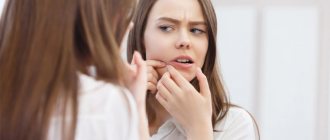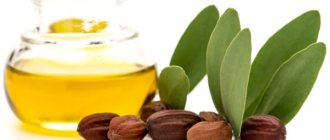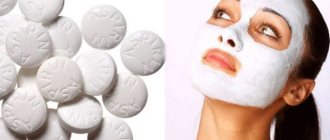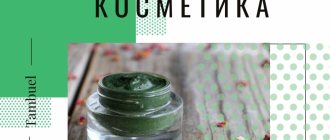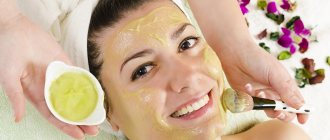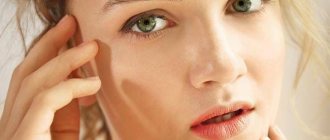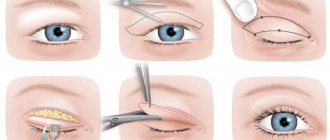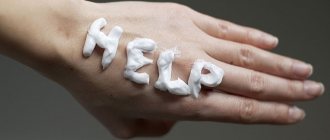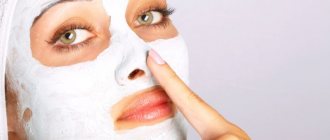Author: Pushkina Natalya Vladimirovna
, dermatovenerologist of the first category, practicing trichologist, member of the Union of Trichologists and the Eurasian Association of Trichologists, teacher at the Nautilus School of Trichology
Seborrheic dermatitis is a serious scalp condition. The scalp peels intensely, a person is constantly bothered by itching, and there is a need to wash the hair frequently to prevent this active peeling. Inflammation may also accompany these manifestations. This problem must be solved comprehensively: properly cleansing the scalp, soothing it, moisturizing it, so that the problem does not reappear.
Forms and complications of seborrheic dermatitis
There are pediatric and adult forms of seborrheic dermatitis.
Sometimes the disease is associated with psoriasis (seborrheic psoriasis).
The severity of the disease varies from mild dandruff to severe erythroderma. Dandruff affects the scalp in the hair growth area. In 70% of children, seborrheic dermatitis usually appears by 3 months of age and resolves spontaneously by 6-12 months.
In adults, seborrheic dermatitis begins in adolescence. Predominant in young and elderly people. More often affects men.
What to do if your scalp is flaky
A balanced diet will prevent the scalp from flaking.
To get rid of burning and flaking of the scalp, you need to:
- Eat properly and balanced.
- Wear a hat when exposed to the sun in scorching heat and winter cold.
- Choose products for washing curls more carefully.
- Carry out procedures in beauty salons where experienced specialists work.
- Use appropriate hair masks.
Lifestyle changes in many cases can overcome this problem. The listed set of measures gradually leads to the relief of inflammation and normalization of the process of sebum production. If your skin continues to peel, you should make an appointment with a dermatologist or trichologist.
Causes of the disease
The reasons for the development of the disease are not completely clear. Seborrheic dermatitis is not a disease of the sebaceous glands, although it develops in areas saturated with them.
A significant role in the development of the disease is played by yeast-like fungi of the genus Malassezia (they exist on the skin of most healthy people, but in some they can cause rashes and skin irritation), the composition of lipids on the surface of the skin, as well as the characteristics of the immune response to Malazessia fungi and their metabolic products.
In adults, severe disease is associated with the following conditions:
- oily skin (seborrhea);
- lack of sleep and stress;
- history of seborrheic dermatitis and psoriasis in relatives;
- states of immunosuppression (organ transplantation, HIV, lymphoma);
- neurological or psychiatric disease.
The main cause of seborrheic dermatitis in children is increased activity of the sebaceous glands (rapid growth and secretion of sebum), which occurs due to the circulation of maternal hormones in the child’s blood in the first weeks of life. Malacesia is not a leading factor in children, unlike in adults.
Getting rid of the manifestations of psoriasis
If there is a suspicion of the allergic nature of this disease, then the doctor will prescribe antihistamines. They relieve the itching.
In case of severe damage, medications containing calcium (chloride and gluconate) are used to desensitize the body.
When detoxification is necessary, doctors prescribe absorbents.
If psoriasis is of an autoimmune nature, it should be treated with immunosuppressants.
The disease is well controlled by glucocorticosteroids, produced in the form of creams and ointments. With their help, inflammatory processes are cured, which has a positive effect on the condition of the scalp.
Taking vitamin D and keratolytics has a similar effect.
If an infection of bacterial origin is associated with external signs of psoriasis, antibiotics must be taken.
Symptoms
Seborrheic dermatitis is manifested by redness, peeling with “oily” scales with a certain localization of foci.
In children - isolated on the scalp (in the frontal area it is called the “baby cap” or “milk crust”), behind the ears and in the external auditory canal, on the face (in the area of the eyebrows, wings of the nose), on the back of the neck (along the edge of hair growth), in areas of skin friction (in folds), under diapers.
Sometimes seborrheic dermatitis in children is widespread. These are rashes in the form of spots with greasy crusts, merging into larger areas. In some cases it is accompanied by itching.
In adults, seborrheic dermatitis is presented in the scalp area, on the face: in the area of the eyebrows, behind the ears, inside the ears, on the wings of the nose and in the areas of the cheeks adjacent to the nose.
It can manifest itself as separate spots with peeling, total damage to the scalp, damage to the eyelids in the form of blepharitis, damage to the chest wall in the form of individual nodules and spots with crusts on the surface, inflammation of the hair follicles on the skin of the upper half of the body (ostiofolliculitis).
Folk remedies
If the disease is not advanced, you can get rid of it with the help of alternative medicine, or combine such methods with medical prescriptions.
Henna
It is one of the most popular remedies in the fight against dandruff.
How to use: pour 60 g of powder with boiling water (you need enough water to get the consistency of sour cream), then cool. You can also dilute the ointment with rosemary and/or tea tree essential oils. Apply to affected areas for half an hour and rinse with warm water.
To prevent your curls from becoming colored, it is better to use colorless henna. The recipe can be supplemented with a decoction of St. John's wort, apple cider vinegar, orange juice, burdock oil, and blue clay.
Unripe (green) walnut
Option #1. 100 g of crushed nut shells are poured with vodka (0.5 l) and infused for 2 weeks. Afterwards the infusion is filtered. Used by massaging into the skin every other day for 20 days.
Option #2. 300 g of crushed leaves, peel and shell are poured into a liter of water and brought to a boil in a water bath. Then the broth is removed from the heat and infused for 2 hours.
How to use: As a rinse after washing your hair. Afterwards, wrap your head in a towel and leave for at least 10 minutes. Repeat the procedure 3-5 times. The effect is noticeable from the first use.
Important. Walnut can dye strands a dark color, so it is better not to use it on light-colored hair.
Kefir
Apply with rubbing movements to the entire surface of the scalp and leave for half an hour. Wash off with rinse aid (1 tbsp dry mustard diluted in 1 liter of warm water). Do it daily for a week. Then repeat the procedure for preventive purposes once a month.
Burdock root
The young root of the plant is crushed (in a meat grinder or grater) and mixed with vegetable oil (1:3). Next, the mixture must be infused for an hour in a glass jar. Then strain and rub into the skin 2-3 times a week. Warm up before use. There should be a total of 10 such rubbings. The next course is repeated after 20 days.
Burr oil
When heated, apply to the scalp. Then the head must be covered with polyethylene, wrapped in a towel and left for 2 hours. Rinse off.
nettle leaves
A tablespoon of crushed leaves is poured into a glass of boiling water. The resulting infusion must be covered, wrapped and kept for 1.5 hours. Strain. Apply to skin after washing, cover head with a bag and leave for 40 minutes. There is no need to wash your curls after the procedure. Use the product twice a week.
Chamomile flowers
Boil table 2. spoons of flowers with 1 liter of water. Cool and strain. Dilute with plain water in a ratio of 1:10 and rinse your hair after washing three times a week. Do 15 procedures, then pause for 3 weeks and repeat the course again.
Chamomile gives light strands a golden hue.
Sage
Infuse for 1 table. spoon of dry sage herb with 1 glass of boiling water for 24 hours. Rub in every other day for a month. This remedy is good for dry seborrhea. For oily dandruff, replace the water in the recipe with a glass of vodka.
Tea tree oil
Powerful antiseptic. For treatment, it is better to add it to shampoo. In its pure form it can cause burns.
Oak bark
For medicinal purposes, you need to prepare an infusion of a tablespoon of bark, poured with 400 ml of boiling water. All this is infused in a water bath for 5 minutes, then filtered. Rub the infusion into the scalp 3-4 times a day, adding a tablespoon of flower honey to the liquid.
Treatment of seborrheic dermatitis in adults and children
Seborrheic dermatitis may resolve without treatment. But it often occurs in waves, with remissions and exacerbations.
Several repeated courses of therapy or ongoing maintenance therapy may be required until the symptoms go away completely. After some time, exacerbation may occur again.
You should consult a doctor if repeating the usual regimens of care and relieving acute symptoms does not help, as well as if there are signs of a secondary infection.
The basis of therapy is the use of medicinal shampoos, creams and lotions.
For children, it is recommended to use special children's shampoos; before washing, you can apply oil or cream to help soften the crusts.
In children, it is important to stop itching, since scratching can cause secondary infection of the scabs.
Features of the treatment method
When selecting external skin care products, choose products containing the following ingredients that reduce skin inflammation:
- Keratolytics: salicylic, lactic acid, urea, propylene glycol.
- Topical antifungal agents: shampoos and creams containing ketoconazole (ciclopirox).
- Products with selenium disulfide or zinc pyrithione.
- Local low-strength corticosteroids can only be used as prescribed by a doctor to relieve the acute phase of the disease, except for the facial skin.
- In case of resistant forms, patients may be offered oral antifungal drugs.
- In severe cases, isotretinoin or phototherapy may be considered.
How is seborrheic dermatitis treated at the Rassvet clinic?
We evaluate the patient's skin type, severity and location of the rash.
The diagnosis of seborrheic dermatitis is based on the clinical picture. The detection of Malacesia has no diagnostic value, since this is a normal microflora of human skin.
A dermatologist evaluates the condition and makes a differential diagnosis with psoriasis, rosacea (on the face), pityriasis versicolor (on the body), and atopic eczema in children. At first, we usually recommend shampoo and only if the selection of permanent skin care products fails, do we move on to active drug therapy.
Alternative Methods
Used in especially severe cases.
Photochemotherapy
Comprehensive approach:
- taking special drugs that create fluorescence, psoralens orally;
- exposure to a prescribed dose of UVA.
Depending on the severity of the disease, different treatment regimens are used. They all come down to two phases: cleansing (2-3 sessions per week until symptoms disappear) and maintenance (once a week for a month, can be extended at intervals of once a month).
Important! Photochemotherapy is contraindicated in children. Women should use contraception to prevent pregnancy during treatment.
Laser therapy (physiotherapy)
Prescribed as an additional means of combating dandruff. The treatment is carried out with a laser beam that focuses photons (low intensity light). Photons improve blood circulation and help activate enzyme metabolism, resulting in the restoration of damaged tissue.
Plasmolifting (plasmotherapy)
The procedure involves subcutaneous injections obtained as a result of processing the patient’s blood in a special centrifuge (obtaining plasma rich in platelets and active components). It not only relieves dandruff and itching, but also helps with other hair problems (loss, weakened condition, etc.).
Plasmolifting has a number of contraindications, which include:
- allergy to anticoagulants;
- chronic or acute diseases;
- menstruation period;
- presence of tumors, hematomas;
- autoimmune diseases;
- pregnancy and lactation.
Vitamin therapy
Recommended for vitamin deficiency resulting in dandruff. The complex of vitamin preparations must include vitamins and microelements: A, F, E, B (1–6, 8, 9, 12), H, C, selenium.
Video: how to treat dry and flaky scalp
Often, peeling of the dermis of the head is the cause of many disorders that have occurred in the human body. That is, there can be several reasons for the appearance of dandruff, so this symptom should be treated comprehensively. Dermatologists recommend that people facing this problem analyze their lifestyle in detail and find factors that could trigger the formation of scales on the head. After watching the video, you will learn which remedies are the most effective in treating scalp flaking.

